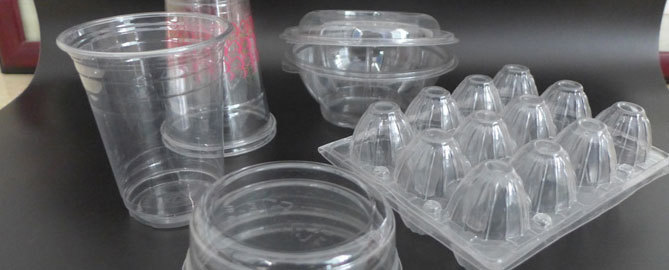Some common sense of PET, PET sheet production line manufacturers to explain for you
Release time:
2022-07-18
PET sheet production line manufacturers believe that the glass transition temperature of PET is about 165, and the crystallization temperature of the material is 120~220. PET is highly hygroscopic at high temperatures. For glass fiber reinforced PET, it is easy to bend at high temperatures. The addition of crystallization enhancers can increase the crystallinity of the material. Transparent products processed with PET have gloss and heat distortion temperature. Special additives such as mica can be added to PET to reduce bending deformation. If a lower mold temperature is used, a transparent product can be obtained by using unfilled PET material.
PET Sheet Production LineManufacturers believe that the glass transition temperature of PET is about 165, and the crystallization temperature of the material is 120~220. PET is highly hygroscopic at high temperatures. For glass fiber reinforced PET, it is easy to bend at high temperatures. The addition of crystallization enhancers can increase the crystallinity of the material. Transparent products processed with PET have gloss and heat distortion temperature. Special additives such as mica can be added to PET to reduce bending deformation. If a lower mold temperature is used, a transparent product can be obtained by using unfilled PET material.

PET sheet production line manufacturers believe that injection molding is mainly used to enhance the molding of PET. Screw injection machines are usually used. In general, the screws should be hardened to avoid wear after use. The nozzle length of the injection machine is as short as possible, and the diameter is controlled at about 3mm. The melting point of reinforced PET is as high as 260. To prevent nozzle clogging, higher power heaters should be installed. In addition, the tip of the nozzle hole should be formed into an inverted cone shape as much as possible, so as to cut off the flow channel and the molten material in the nozzle.
PET Sheet Production LineThe manufacturer believes that the material with too large L/D stays in the barrel for too long, and excessive heating can easily lead to degradation and affect product performance. The compression ratio is too small, the shear heat generation is small, the plasticization is easy to deteriorate, and the product performance is poor. On the contrary, the glass fiber will break more and its mechanical properties will be reduced. When processing glass fiber reinforced PET, the inner wall of the barrel is seriously worn, and the barrel is made of wear-resistant material or lining wear-resistant material.
PET sheet production line manufacturers believe that the nozzle should be short, the inner wall should be polished, and the aperture should be as large as possible. Hydraulic brake valve nozzles should be used. Measures should be taken to keep the nozzle warm and control the temperature to ensure that the nozzle does not freeze and clog. But the nozzle temperature can not be too high, otherwise it will cause salivation. Before forming, the cylinder must be cleaned with low pressure PP material.
PET sheet production line manufacturers believe that the main injection conditions of PET:
1. The temperature of the barrel. PET sheet production line manufacturers believe that the molding temperature range of PET is narrow, and the temperature will directly affect the performance of the product. If the temperature is too low, the plasticization is not good, resulting in defects such as dents and lack of material in the plastic parts. On the contrary, too high temperature will cause overflow, nozzle salivation, deep color, reduced mechanical strength and even degradation. Usually the cylinder temperature control in 260~310, glass fiber reinforced PET cylinder temperature is 250~290, should not exceed 300, the nozzle temperature is generally lower than the cylinder temperature 10~20.
2. Mold temperature. PET sheet production line manufacturers believe that the mold temperature directly affects the cooling rate and crystallinity of the melt, and the crystallinity is different, and the performance of the plastic parts is also different. Usually the mold temperature should be controlled in 100~140, forming thin-walled plastic parts should take a small value. When forming thick-walled plastic parts, a larger value should be used.
3. Injection pressure.PET Sheet Production LineManufacturers believe that PET melt has good fluidity and is easy to form. Usually medium pressure is used, the pressure is 80 ~ 140MPa, and the injection pressure of glass fiber reinforced PET is 90 ~ 150MPa. The injection pressure is determined by considering the viscosity of PET, the type and quantity of filler, the location and size of the gate, the shape and size of the plastic part, the mold temperature, the type of injection molding machine, etc.
Category complete cost-effective
With professional technology dedicated to product development, create cost-effective products to meet the different needs of customers.
Good quality trustworthy
Quality management is embedded in each production process during the production process. From raw material purchase to product manufacturing
Manufacturing, packaging, shipping, etc. have layers of inspection, supervision, and strive to create excellent quality.
Worry-free after-sales service
Careful service details highlight the quality of service!
recommend News
Share

